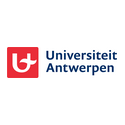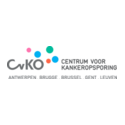In short
The ESSAG study is testing new ways to make it easier for women to get screened for cervical cancer. It focuses on women who haven’t had a screening in the last 6 years.
The study compares 2 GP-based approaches with the current existing intervention:
- Group A: Women are offered an at-home self-sampling kit during a regular doctor visit.
- Group B: Women are mailed a self-sampling kit by their doctor.
- Group C: Women get the usual screening invitation by mail.
The study mainly looks at which method gets more women to participate, and how easy it is for doctors to use. The results will help shape better cervical cancer prevention programs in Flanders and beyond.
Project description
Cervical cancer is highly preventable through accurate screening, but there is an important social inequity in both the uptake of cervical screening as well as in the incidence and mortality of cervical cancer. Offering self-sampling kits may provide opportunities to lift the barriers for participation in screening. Therefore ESSAG trial aims to evaluate on a large scale the participation rate in cervical cancer screening using two GP-based interventions and compare them to the currently existing intervention. ESSAG will enrol women who have not been screened during the last 6 years and have a global medical file at a given GP practice. The global medical file of participating GPs will be completed with screening status information from the cancer screening organisation. Three intervention arms will be set up (cluster-randomised trial):
- Arm A: the GP discusses cervical cancer screening during a consultation for an unrelated issue and presents a self-sampling device with explanations on how to use it. The GP will be provided with communication material to do so, included material tailored to women with low health literacy and available in different languages;
- Arm B: the GP sends a letter with a self-sampling device to eligible women from his/her practice;
- Arm C (control): a routine invitation letter is sent to eligible women by the cancer screening organisation.
The effect measure will be differences in participation of arms A and B versus C and between the two GP interventions (A vs B). Furthermore, a cost-effectiveness analysis will show the extent to which the observed effects can be considered worthwhile from a societal cost-benefit analysis. Finally, through interviews with GPs, a feasibility analysis will reveal the strengths and pitfalls of the intervention in arm A. The findings of ESSAG are expected to trigger future decision making in Flanders and other western countries.
Sciensano’s contributes epidemiological support to the project and is responsible for the full statistical analyses.
Sciensano's project investigator(s):
Service(s) working on this project
Partners








